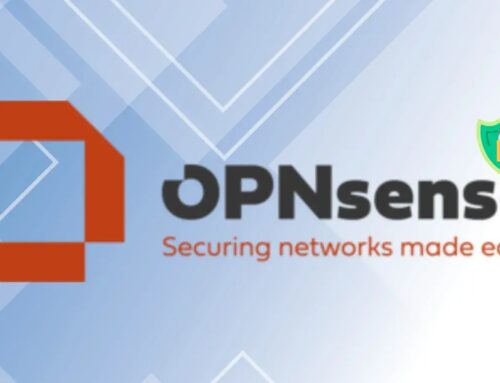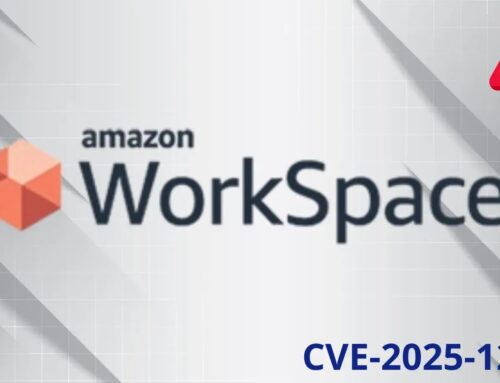
Qualys Confirms Data Breach – Hackers Accessed Salesforce Data in Supply Chain Attack
In a significant development that underscores the pervasive risks of supply chain vulnerabilities, Qualys, a leader in cloud security and compliance, has confirmed it fell victim to a sophisticated data breach. This incident highlights the critical need for robust third-party risk management, even for cybersecurity stalwarts.
The Supply Chain Attack: Targeting Salesloft Drift
The breach at Qualys did not originate from a direct attack on its internal infrastructure but rather through a widespread supply chain attack. The primary target of this campaign was Salesloft Drift, a popular third-party Software-as-a-Service (SaaS) application. Qualys utilized Salesloft Drift to automate sales workflows and manage customer interactions, a common practice for businesses seeking efficiency and scalability.
Supply chain attacks are increasingly prevalent and dangerous. They exploit the trust relationship between an organization and its vendors, allowing attackers to compromise a target indirectly through a less secure third-party service. This method often bypasses direct security controls and can have far-reaching implications, as demonstrated by the Qualys incident.
Impact on Qualys: Salesforce Data Compromised
As a result of the compromise of Salesloft Drift, attackers gained unauthorized access to a portion of Qualys’s Salesforce data. While the specific nature and volume of the accessed data have not been fully disclosed, any compromise of customer or operational data within a CRM system like Salesforce is a serious concern. This incident serves as a stark reminder that even seemingly innocuous third-party integrations can become vectors for significant data breaches.
It’s crucial for organizations to understand that their security posture is only as strong as their weakest link, and often, that link is a third-party vendor with legitimate access to critical systems.
Understanding Supply Chain Attacks
Supply chain attacks typically involve compromising a component of a product or service before it reaches the end-user. This can include:
- Software Updates: Malicious code injected into legitimate software updates (e.g., SolarWinds).
- Third-Party Libraries: Compromised open-source or commercial libraries used in software development.
- SaaS Providers: As seen with Qualys, attackers target the services used by an organization.
- Hardware Components: Tampering with physical hardware during manufacturing or distribution.
The key characteristic is the exploitation of trust within the digital ecosystem. Attackers leverage the integrated nature of modern business operations to move laterally from a less secure vendor to a more fortified primary target.
Remediation Actions and Best Practices
While no organization can eliminate all risk, several proactive and reactive measures can significantly reduce the likelihood and impact of supply chain attacks like the one Qualys experienced:
- Rigorous Third-Party Risk Management (TPRM): Implement comprehensive due diligence processes for all third-party vendors. This includes security assessments, regular audits, and clear contractual agreements on data handling and security protocols.
- Least Privilege for Integrations: Ensure that third-party applications like Salesloft Drift are granted only the minimum necessary permissions to perform their functions within your systems (e.g., Salesforce). Regularly review and revoke unnecessary access.
- Data Minimization: Store only the essential data in third-party services. The less sensitive data shared, the lower the risk in case of a breach.
- API Security and Monitoring: Secure all API endpoints used for third-party integrations. Monitor API traffic for anomalous activity and potential breaches.
- Zero Trust Architecture: Adopt a Zero Trust model where no user or service, internal or external, is implicitly trusted. All access requests must be authenticated and authorized.
- Incident Response Planning: Develop and regularly test a robust incident response plan specifically for third-party breaches. This should include communication protocols, data breach notification procedures, and forensic investigation steps.
- Employee Training: Educate employees about the risks of phishing, social engineering, and the importance of adhering to security policies, especially when interacting with third-party applications.
- Software Supply Chain Security Tools: Utilize tools that provide visibility and control over your software supply chain, identifying vulnerabilities in third-party components and libraries.
Tools for Supply Chain Security and Monitoring
Effective defense against supply chain attacks requires a multi-layered approach, often relying on specialized tools. Here are some categories and examples:
| Tool Category | Purpose | Examples |
|---|---|---|
| Software Composition Analysis (SCA) | Identifies open-source and third-party components in codebases, highlighting vulnerabilities (CVE-XXXX-XXXXX) and license compliance issues. | Synopsys Black Duck, Mend.io (formerly WhiteSource), Snyk |
| Cloud Security Posture Management (CSPM) | Continuously monitors cloud environments (including SaaS integrations) for misconfigurations, compliance violations, and security risks. | Orca Security, Wiz, Qualys Cloud Security Platform |
| API Security Gateways & Management | Manages, monitors, and secures APIs, which are critical for SaaS interoperability, preventing unauthorized access and data exfiltration. | Apigee (Google Cloud), Azure API Management, Kong API Gateway |
| Third-Party Risk Management (TPRM) Platforms | Automates and streamlines the assessment, monitoring, and management of risks associated with third-party vendors and suppliers. | SecurityScorecard, OneTrust, Panorays |
| Security Information and Event Management (SIEM) | Aggregates and analyzes security logs from various sources (including SaaS applications), providing real-time threat detection and incident response capabilities. | Splunk, IBM QRadar, Microsoft Sentinel |
Key Takeaways for Cybersecurity Professionals
The Qualys breach underscores several critical points for anyone involved in cybersecurity or IT operations:
- Supply chain attacks are a persistent and evolving threat, requiring constant vigilance.
- Third-party risk management is not a checkbox exercise; it demands continuous assessment and adaptation.
- Even leading cybersecurity companies are vulnerable, emphasizing that no organization is immune.
- The principle of least privilege must extend to all integrations, especially with SaaS platforms.
- Organizations must prioritize robust incident response plans that account for third-party breaches.
As our digital ecosystems become increasingly interconnected, understanding and mitigating supply chain risks will remain paramount to safeguarding sensitive data and maintaining operational integrity.





